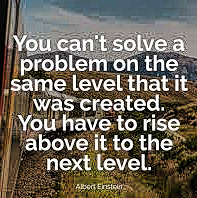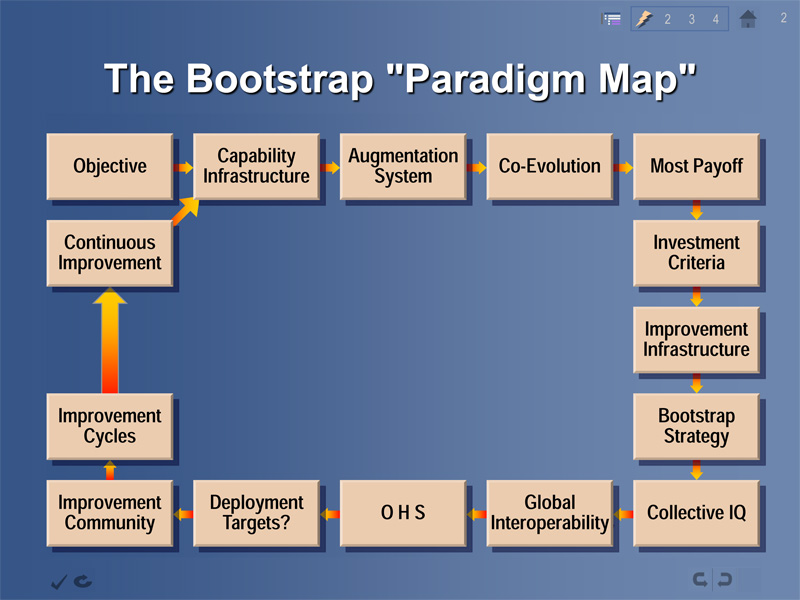Cause \ Effect
The term “Mentor Line” (ML) is our homegrown phrase for the limit for curiosity imposed by a mentor or a discipline. Over the decades we established close relationships with two dozen living mentors. We studied under them. We assisted them in their work. We lived with them. They tutored and criticized us until they indicated we “got it.”
Only then did we learn that our mentors were aggressively uninterested in advancing their knowledge base so as to address the conundrum for which their discipline was formed in the first place. No mentor is going to give up his well-earned social status for a lost cause.
When we encountered their self-imposed limit in curiosity, we were told “Enough for inquiry, farm where the discipline has already plowed.” There were two reasons given.
- The discipline founders determined it was quite enough complexity for one brain to handle
- Pushback by other disciplines will dilute your break-out efforts
As committed system-think freaks, the idea of abandoning curiosity and inquiry at an imaginary, arbitrary line, for any reason, was inconceivable. The only mentor that grew to appreciate our going where no man had gone before was Rudolf Starkermann. While climbing above the mentor line to find the cause was second nature for us, we soon found out about the unforeseen social impacts. We started using the term mentor line two decades ago to distinguish the lower levels where the consequences manifest from the upper levels where the causal mechanisms operate.

It is easy for you to get above the mentor line, Take any pressing social issue in the news like organizational dysfunction and ask yourself, why is it in the news? You will find the answer to that question is an adventure in the vast universe of causation. When you have gathered enough candidate causes to be comfortable, ask yourself how did these candidates get to be causes?
With that question you have just stepped over the mentor line. There is no one to talk to about your quest to identify the system of diverse causes than landed the topic in the news. Your internet searches will have no hits.
The idea that our human nature “knows” when we have reached a limit in complexity feedstock is solid. Subconsciously, everyone knows their limit. Science has learned that when the mind is engaged with serious thinking in complex matters that the conscious mind consumes more brain glucose than its ready local supply until it runs out and shuts down to refuel. Sooner or later everyone crashes into this wall, where, totally out of your control, you must wait until the supply of brain glucose is restored from other parts of your body. The whole arrangement is automatic. You have zero control over it.
This cognitive limitation varies according to your experience in dealing with complex problems and your competency with IA, Ashby’s “Intelligence Amplification.” When we reach the glucose-based impasse, we know it’s time to consider control-theory, computer-mediated. With the advances in modular modelling software, most complexities can be dynamically modelled. Astrophysics and weather forecasting, for instance, are big users of the practice. Starkermann began using university main frames for social behavior studies in 1961.
The ridiculous idea that society will push back if you advance in social-behavior knowledge is also solid. Somehow people can tell if you’ve been nosing around above the mentor line and will give you “that look.” Your social status is under review. Don’t fear.
The tangible “pushback” from social status loss turned out to be that our Rolodex emptied out – the backs of fleeing men. Get above the mentor line a couple of levels and:
- Nobody knows what you’re talking about
- Nobody wants the developed knowledge from the taboo zone. Fear of status loss.
Unless you have farmed for knowledge above the mentor line yourself, you can’t begin to imagine the tranquility and treasure waiting there for you. Without barriers and antagonists, the El Dorado gold is stacked up in plain view. Up there are all the causes of the consequences and carnage manifesting unimpeded below the mentor line. You have reached the mother lode of understanding why hierarchies act like they do.
Without knowledge of the flourishing social system specification, the people below the mentor line have nothing to navigate by but their intuition – notorious for making bad choices. Bandaging individual consequences is not how you fix a dysfunctional system.
The mentor line marks:
- The limit of rational discourse
- Abandonment of responsibility for the primary mission
- The limit of published knowledge, of academic R&D
- The edge of social status neutrality
- You’re on your own. No help, no interference. You’re responsible for the outcomes.
- When feedback of performance data has no bearing on what process will take place next
Once you’re working above the mentor line, Rolodex emptied, it gets to be comfortable. Working directly with root causes, it seems so unintelligent and wasteful to be spending your efforts on bandaging individual consequences when you can fix all the consequences in one stroke by removing the cause.
One of the big surprises of 2013 was the huge drop in workforce injury rates. Painfully aware that conventional safety programs, while popular, have no effect on losses, Plan B dropped losses in half without having done anything specifically targeted at safety at all. The quantum improvement was spontaneous and immediate. We noted that the impetus for safety coincided with personalization and happy collaboration. Workers began looking out for each other’s backs on their own. Just like Navy Seals.
With the big jump in safety as part of the Plan B benefit package, we had proof positive that the ruling class has no interest in workforce safety or its health. This is too easy to demonstrate to dispute. No head shed is going to go Plan B to improve the wellbeing of their workforce.
The Mentor Line illustrated
When the mentor line happens to separate cause from effect, it is very bad news for those struggling with the consequences. Kurt Gödel’s mathematical physics proved, in 1939, that the cause of the calamity cannot be at the same level where its consequences manifest. Attempts to defy this natural law of nature are painful to watch. The GNP metric example here of pursuing the impossible is ongoing.

The GDP parallel to Plan B
Since WW II, the Gross Domestic Product (GDP), first assembled by Simon Kuznets of the US Commerce Dept., has been used to grade how a nation “is doing.” In 1971, Kuznets was awarded a Nobel Prize for his metric.
GDP is used by a great variety of distinguished organizations around the globe as a comparative measure of national performance for a great variety of functionalities. In fact, GDP is no more than a measure of market activity. The happier the icons of Wall St. are about rising GDP, the happier the nation. Right?
When GDP change is used to measure everything about a society, its narrow, short range focus on profits often makes matters worse. The COVID-19 pandemic, for one example, underscored hundreds of instances where short-range gain in GDP crippled the ability to respond to the massive influx of new victims. The payoff of GDP narrowness hit the US banking system in 2007 and we all paid for the bailout. Similar examples abound. GDP remains in power because that’s the way the Establishment wants it (social status).
The limitations of GDP to measure parameters that are fundamentally essential to social/psychological success of a nation, its disjuncture between GDP and societal well-being, have been recognized as such by all sorts of disciplines and sciences for decades. In 2009, a panel of experts issued a report, Measuring our lives: Why GDP doesn’t add up, signaling that GDP should be dethroned.
In addition to GDP, the high priests of social life-measuring propose a nation by nation “dashboard.” Stafford Beer developed and engineered an electronic dashboard system for Allende of Chile, called Cybersyn, cut short by the 1973 assassination. Much discussed, the dashboard concept has no implementations of “quality of life” to assess. The dashboard concept is ultimately an automated rule-based management system and, like all rule-based control systems, rendered counterproductive by the 2nd Law.

Work to standardize the measures for the dashboard has been going on since 2009 by various groups, with various experts and Nobel Laureates. In 2015 the UN, where good ideas go to die, established a set of 17 goals with 232 associated indicators. So much for the quality of life.
Policy makers have had no problem in preventing the GDP well-being augmentation initiative from gaining traction. OECD hosts international conferences every three years with thousands of participants. Of course, nothing gets implemented. GDP is still the standard.
The quality of life supplements to the GDP proposed by the intellectuals coalesce into three categories (social flourishing). The same categories emerged from working above the mentor line getting to Plan B and comparing its performance with Plan A performance:
Plan B metrics
- Prosperity
- productivity
- Health
- Safety
- Physical
- Life expectancy
- Psychological
- Square deal, equality
- Inalienable rights
- Social status
- Security
- Viability husbandry
- Positive reciprocity
- Increasing competitive advantage
- Resilience to disturbance
- Sustainability
- Environmental protection
These categories are interdependent as a system. They appeared in bold relief after Plan A ideology was transposed to Plan B ideology and measurements were taken. Plan A is below the mentor line, of course, and Plan B is above the mentor line, which is why it works.
High stakes trust applies to the lot. The ecological system that is a social system is defined by these connected categories. No one parameter can be changed independently of the others. They are changed as a set or they are not changed at all. Improving individual parameters is fleeting (Nash). Plan B is a systems-approach exemplary.
What the OECD experts cannot know from their Plan A view is that when the social system is “fixed,” as a system, the quality-of-life issues they proscribe automatically take care of themselves. Further, if the social system is not fixed, the quality of life issues they enumerate worsen.
Quality of Life metrics by OECD
- Housing
- Income
- Jobs
- Community
- Education
- Environment
- Civic engagement
- Health
- Life satisfaction
- Safety
- Work-life balance
There are three defects in the attempt to augment the GPD+ that confirm the mentor line distinction.:
- There is no viable success reference in operation to examine and evaluate. The quality of life measures are not inputs to social behavior, but outputs from social behavior.
- No definition of or recognition of the system of social system to track
- No workaround for impasse #2 (social status by domination). The initiative has stalled at stalemate.
(1) No one in the quality-of-life standard business has any idea what “done” looks like. There is no GPS destination to navigate by. There are no implementations to study. Stuck below the mentor line, the fix they can imagine from Plan A can’t possibly work
(2) Being captive below the mentor line, no one in the GPD augmentation business recognizes that the “system” in social system obeys all the systems laws, among them the fact that you can’t independently change one variable without changing others. This ignorance exhibits when attempts are made to independently fix an item on the list, such as safety. Billions are spent on safety training with nothing to show for it.
Unless the system is correctly specified, system-think can’t take place. It is Kryptonite to specialization. This property of all systems is in plain view on a global scale. In the case here, it requires Plan B as a benchmark to define the ingredients of social system.
(3) No one in the well-being attainment business recognizes that the Establishment waits in ambush to spring its social-status impasse should the successful approach to GNP wellbeing somehow be discovered. Impasse 2 validates that the issue cause was above the mentor line.
Evidence of the expert-impasse 2 collision is everywhere. The promoters of the concept are dead in the water and refuse to acknowledge it.
What odds do you give that the GNP participants in defiance of natural law would welcome Plan B enlightenment about the Mentor Line and its ramifications?
Views: 111


